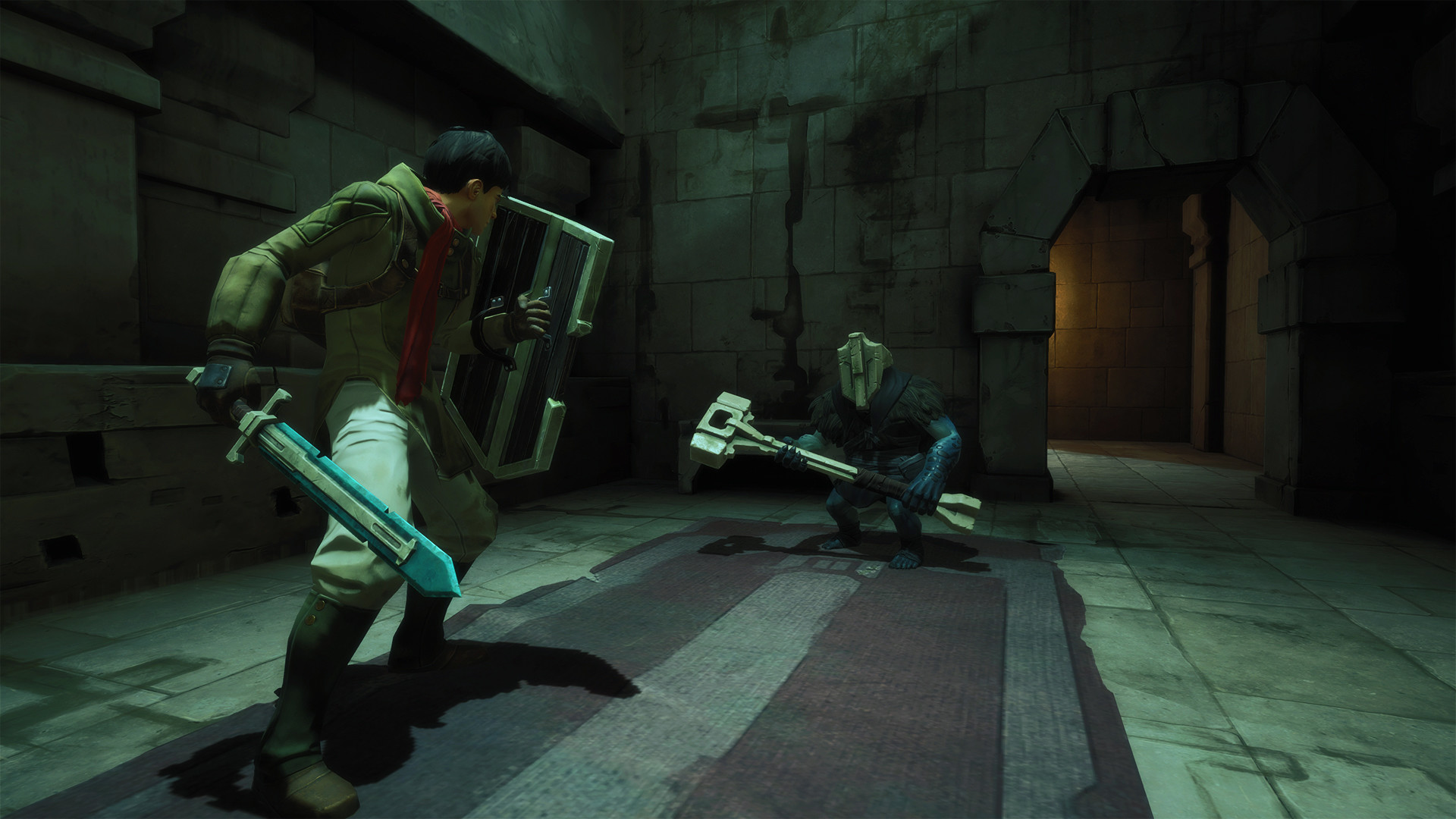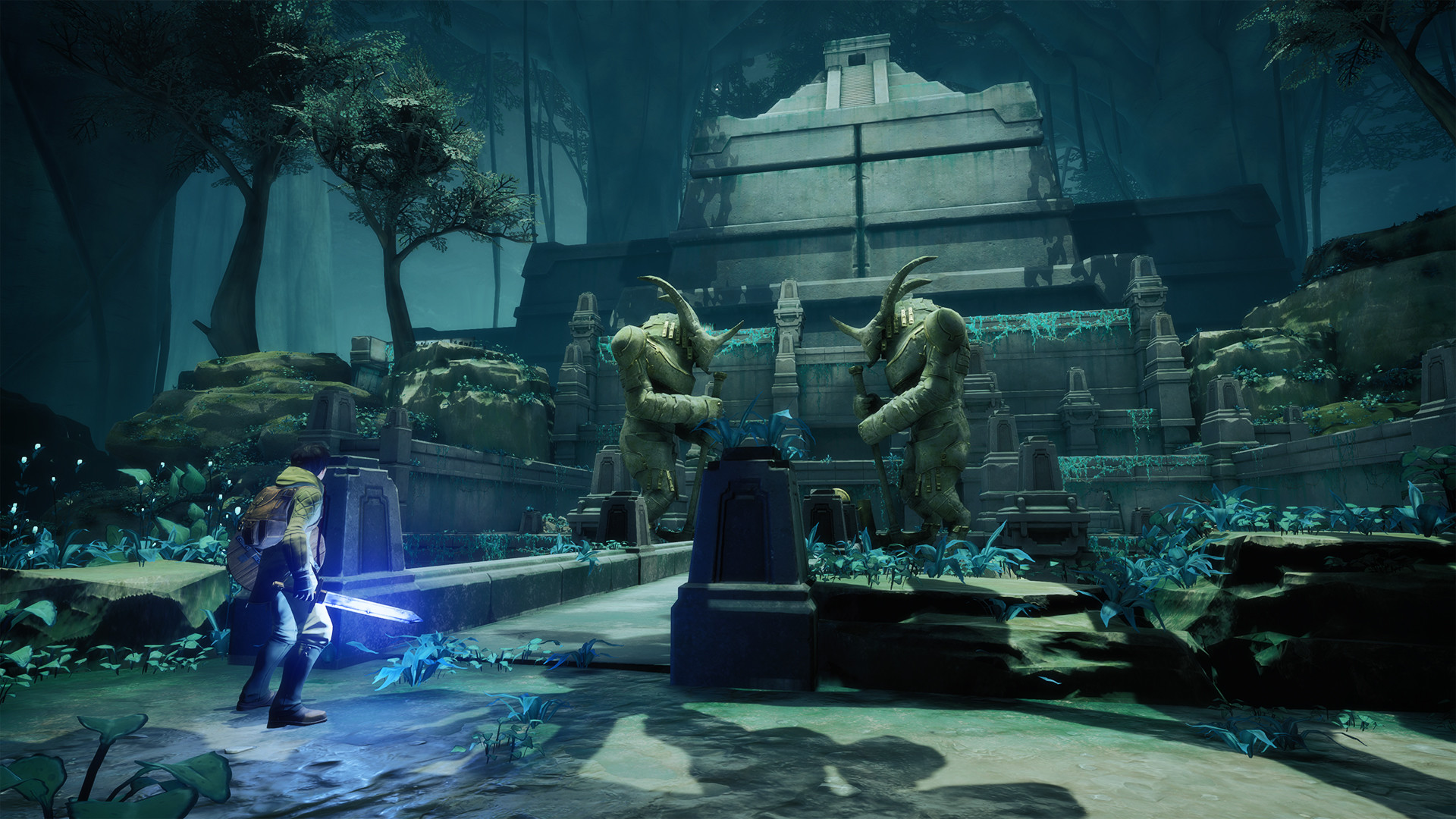
Chronos: Before the Ashes occupies a strange space in the… well… chronology of this series. It’s a prequel to Remnant: From the Ashes, but it’s also a re-worked VR spin-off title with a modified camera and a few other tweaks to make it play more like a normal third-person action game and feel like a proper follow-up to Remnant. While its DNA of being a smaller VR title does ultimately inhibit Chronos from feeling like the true all-encompassing companion Remnant really deserves, it does more than enough with Remnant’s ideas – and a few of its own – to stand on its own as a fun, well-paced Souls-like adventure that makes a solid effort at earning your attention.
Thematically, there’s a lot that Chronos has in common with its big brother Remnant: From the Ashes. The cryptic story-telling and dark fantasy elements that made that game stand out just enough to be its own thing are here in about the same capacity, except without guns this time. If you enjoyed the gameplay, the level designs, and the enemies from Remnant, then you’ll be right at home here. In fact, most of those things are ripped right out of the original game and plopped into this one. That’s something it could get away with as a small VR game, but in this form, it might feel a little… stingy to some.
Chronos is competing in a much bigger pond now than it was on VR, and its lack of variety in certain areas is illuminated by that. But fear not, the story here is essentially a new one. While it’s a bit thin and mostly just revolves around solving the riddles of the labyrinth in a quest to slay an ancient dragon, it gets the job done and serves as a reasonable foundation, upon which, a game like this can work just fine. At first you aren’t given a lot of options for your character. A man or a woman and a sword or an axe, as well as a general difficulty setting. Thankfully, things do open up once you get your arms around the combat and exploration. Different weapons that favor speed or power can be found, with a few more interesting options that you don’t see every day like the spear, which doesn’t do well with crowd control, but can deliver a devastating series of piercing stabs to a single target from a good distance.
"While its DNA of being a smaller VR title does ultimately inhibit Chronos from feeling like the true all-encompassing companion Remnant really deserves, it does more than enough with Remnant’s ideas – and a few of its own – to stand on its own as a fun, well-paced Souls-like adventure that makes a solid effort at earning your attention."
Giving parrying and general blocking with your shield their own respective buttons is also a nice touch, as it makes defending yourself slightly more engaging than games where both are mapped to the same one. If you go for a perfect parry but miss, you’ll take a hit instead of just defaulting to a regular block, whereas if you always play it safe with regular blocking, you’ll never get the reward of temporarily imbuing your weapon and stunning your enemy that a perfect parry can bestow. Perfect dodges also imbue your weapon, so learning enemy attack patterns as quickly as possible is highly advisable, as baiting them into a big swing that you know how to dodge can quickly give you the upper hand.
Combat is seasoned a bit further with magic stones that build up energy with successful hits and can reward you with temporary buffs like invincibility or increased damage once they’re full. The gameplay of this type of game wouldn’t be complete without some RPG elements though, and while these are also a bit thin, you do level up as you fight and earn points you can spend on upgrading the stats of your choice. However, one of Chronos’ more unique elements, where your character ages by a year every time you die, will also affect your stats as strength and agility become less malleable over time in favor of wisdom and arcane skill. The RPG side of Chronos isn’t as deep or rewarding as many of the games it’s clearly inspired by, but there is enough here to keep you forging ahead towards your next big boss battle and the next opportunity to further refine your skills.
The RPG mechanics, while simple, are woven into the combat well enough to feel organic and necessary. Chronos also mixes in some cute ideas like being shrunk down to the size of a toy to reach a key in a locked cabinet and replacing a painting’s missing section to reveal that it’s really a portal to the world it portrays. That said, with Chronos originally being a game that was aiming a little lower than its predecessor, you will quickly notice that the enemy types for each of its main areas are largely reused from Remnant and aren’t what I would call diverse. As a result, they can blend together a lot of the time. This leads to some stretches of multiple battles starting to drag sooner than they otherwise would because you’re only fighting variations of any given stage’s 3 or 4 enemies most of the time.
"The RPG mechanics, while simple, are woven into the combat well enough to feel organic and necessary."
Some of said fights that take place in smaller rooms can even lead to the occasional camera issue as well. But the saving grace of all of that is that the enemies are well-designed, fun to fight, and some solid boss battles help mix things up before it gets too stale. Chronos’ serviceable sense of progression also helped keep combat interesting enough to keep my interest most of the time. A nice bonus is the well-constructed levels that don’t waste your time, as they often spit you back out to an area you know you need to go back to when it’s necessary. I very much favor this type of level design over being made to backtrack every time I acquire an item I needed in a previous area. Chronos does both, but fortunately it’s usually the former.
Speaking of its levels, most of Chronos’ familiar areas are also irrefutably beautiful. Don’t let the somewhat drab industrial rooms of the opening section and the relentlessly brown caves of Krell give you the wrong idea. Chronos does have some wonderfully vibrant locations in store for you that are just as interesting to explore and solve its puzzles in as they are satisfying to slay its regenerating monsters in. The canopies and stone temples of Pan Village are a particularly sweet serving of eye candy that I couldn’t get enough of, personally.
While, generally, the graphics for Chronos’ locales are anywhere from mediocre to great depending on where you are, the character detail is more consistent with its art style. It won’t blow you away, and it definitely looks like a VR game from a few years ago, but it works for what it is and doesn’t bite off more than it can chew. I would have liked to have seen either more effort put into the assets and lighting to at least bring them on par with Remnant for this version, or at least a higher frame rate for the visuals that it does have, but again, for a wallet-friendly port of a VR game, characters and assets look okay and the frame rate, while an underwhelming 30ish per-second, is reliable and steady.
"While, generally, the graphics for Chronos’ locales are anywhere from mediocre to great depending on where you are, the character detail is more consistent with its art style. It won’t blow you away, and it definitely looks like a VR game from a few years ago, but it works for what it is and doesn’t bite off more than it can chew."
If you’ve ever heard a soundtrack for any sort of fantasy role playing game, then you’ve heard most of the ideas in the music of Chronos. While my memory isn’t good enough to spot any specific themes or melodies being reused from Remnant, the general tone of the soundtrack is very familiar all the same. Soaring, uplifting chord patterns with lots of emphasis on strings ring out when new areas and secrets are uncovered. This contrasts in a predictable way with thumping percussion and low, resonant brass during boss encounters. It’s a simple soundtrack that, at times, can cross the border into cliche’ city, but it still stays effective enough to convey the moods it aims to.
Chronos: Before the Ashes does a commendable job with what it is, and Gunfire Games has a lot to be proud of here. It’s a shame that so much of it is either reused from Remnant or held back by its VR roots, but THQ Nordic was clearly correct in thinking that it deserved a reworked, non-VR release. Despite its relative shallowness to other games in the genre, it manages to stay an alluring adventure most of the time with adequate challenge, satisfying combat, and reasonable production values that more-or-less match its price tag. It stops short of imitating the sturdy challenge and compelling depth of other Souls-likes, but in exchange, it becomes more of its own, slightly more welcoming flavor of the sub-genre with a solid foundation and a few surprises thrown in.
This game was reviewed on the PlayStation 4.
Lively action and solid RPG mechanics shine through much of Chronos’ more shallow elements, making it a solid, appropriately-priced recommendation for most gamers.
An occasionally stilted camera, redundant enemies, and some mediocre production values ultimately hold Chronos back from really standing toe-to-toe with the games that inspired it.


















